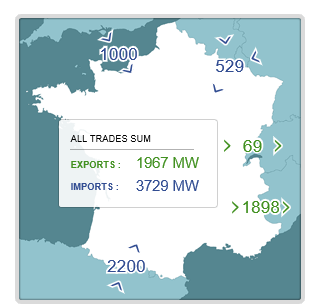Gas Generates at least Half UK's Power
Gas continued to provide broadly half of the fuel for UK power generation in the three-month period from September to November 2016.
Electricity generation by major power producers was down 0.3%, with coal down by 61%, offset by an increase in gas of 40%, according to official data.
Gas provided 49.2% of generation by major power producers, with nuclear 24.4%, renewables 17.3% and coal 9.1%, latest figures from the UK government's Department of Business, Energy and Industrial Strategy (Beis) January 26 revealed.
That share may at times be higher now, as data from French grid operator RTE indicates how the subsea power interconnector, which historically has supplied French nuclear power to Britain, this week exported 1 GW from Britain to freezing France to cover outages at some 9 GW of its 63 GW nuclear plants. Much of the spare UK generation capacity is gas-fired, so power being exported to France may heavily rely on generation by UK gas-fired units. However recent Elexon data shows coal-fired plants providing as much as 18% of UK generation this chilly week – double the recent norm.

French cross-border electricity trade in MW at 6pm local time, January 26 2017 (Map credit: France's RTE)
Gas’s share of UK power generation in 2Q and 3Q2016 was roughly 43%-45%, in both cases well above comparable 2015 levels. Gas is advantaged over coal in the UK as there is a carbon price floor that replaces the ineffective European Union carbon certificate price and is several times higher than it.
UK primary energy consumption on a fuel input basis rose by 1.2% year on year in the three months to November, with that month’s temperatures being the coldest in November since 2010. Indigenous energy production rose by 0.1%, with increased low carbon output. That was partly because, while September-November oil production was 5.2% lower because of an outage at the UK’s biggest oilfield Buzzard, gas output was 6.6% higher year-on-year thanks to the contribution since February of the Laggan-Tormore gas field west of the Shetland islands.
Indigenous coal production was 30% lower because the Kellingley colliery in Yorkshire, the last large deep mine in operation, closed December 18, 2015.
Mark Smedley



